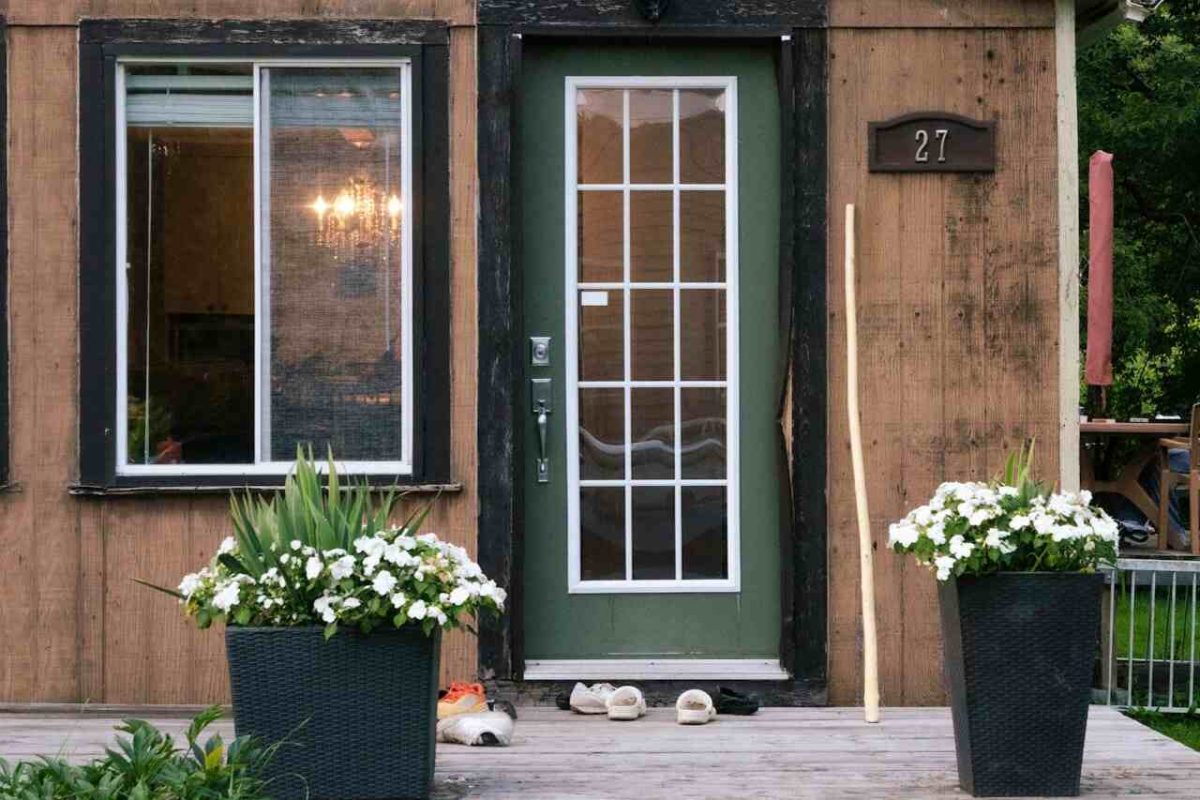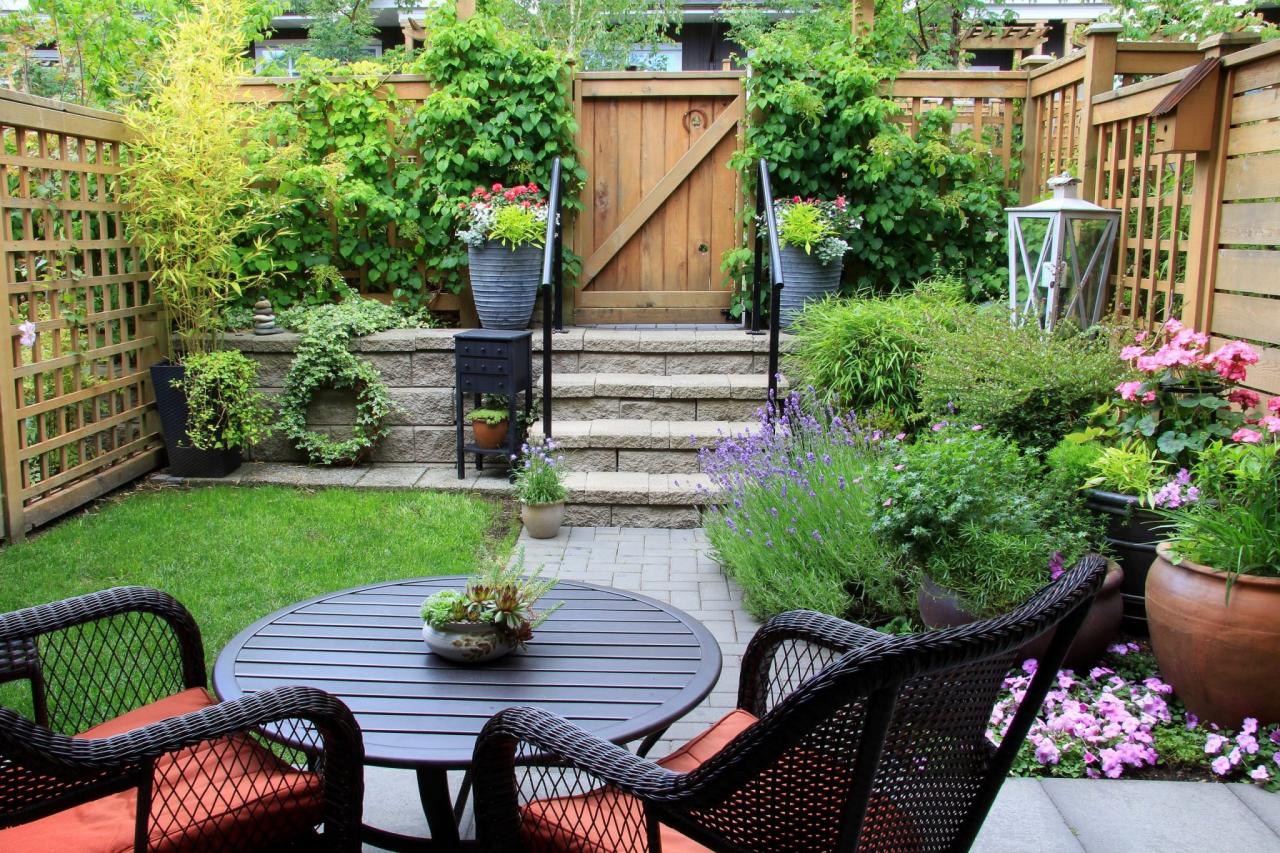Home-garden home-improvement doors-windows: Transforming your house into a dream home starts with the details, and what better place to begin than with the portals to your sanctuary? From energy-efficient upgrades to stunning aesthetic enhancements, choosing the right doors and windows isn’t just about functionality; it’s about crafting a space that truly reflects your style and enhances your lifestyle.
This guide delves into the exciting world of door and window selection, installation, and integration with your home’s landscape, offering a complete roadmap for a successful renovation.
We’ll cover everything from planning your budget and timeline to selecting the perfect materials and maximizing natural light. Learn about different door and window styles, installation techniques, and how to improve your home’s energy efficiency and security. Get ready to unlock the potential of your home’s exterior and create a space you’ll love for years to come!
Home Improvement Project Planning

Planning a home renovation project, especially one involving significant upgrades like door and window replacements, requires meticulous attention to detail. Failing to adequately plan can lead to cost overruns, project delays, and ultimately, dissatisfaction with the final result. A well-structured plan, however, ensures a smooth and efficient process, maximizing your investment and delivering a beautiful, energy-efficient home.
Designing an Energy-Efficient Renovation Plan
A successful home renovation plan incorporating new doors and windows prioritizes energy efficiency. This involves selecting high-performance windows with low U-values (indicating low heat transfer) and airtight seals. Doors should similarly be well-insulated and properly sealed to prevent drafts. Consider incorporating features like double or triple-pane windows, low-E coatings to reflect heat, and weather stripping around all frames.
For example, a plan might involve replacing single-pane windows in a drafty Victorian home with energy-efficient, double-paned windows with argon gas filling and low-E coatings. This specific choice is tailored to improve insulation and reduce energy loss during both winter and summer months. Furthermore, the plan should include an assessment of existing insulation and air sealing in walls and attics to maximize the impact of the new doors and windows.
Budget Breakdown for Door and Window Replacement
A detailed budget is crucial. This should include the cost of materials (doors, windows, weather stripping, caulking, etc.), labor (installation, potential demolition and disposal), permits (if required), and any unforeseen expenses (e.g., repairs to existing framing). For example, a budget for replacing five windows and one exterior door might look like this:
| Item | Estimated Cost |
|---|---|
| Windows (materials) | $5,000 |
| Exterior Door (materials) | $1,500 |
| Installation Labor | $3,000 |
| Permits | $200 |
| Contingency (10%) | $900 |
| Total Estimated Cost | $10,600 |
Note: These figures are estimates and can vary greatly depending on location, materials chosen, and the complexity of the installation. Always obtain multiple quotes from reputable contractors.
Timeline for Home Renovation Project
A realistic timeline is essential to manage expectations. This should include specific start and end dates for each phase of the project, from initial design and material selection to final installation and cleanup. For example, a typical timeline might look like this:
- Weeks 1-2: Design and material selection, obtaining quotes from contractors.
- Weeks 3-4: Permitting and final contractor selection.
- Weeks 5-7: Material delivery and site preparation.
- Weeks 8-10: Installation of doors and windows.
- Weeks 11-12: Final inspections and cleanup.
This is a sample timeline and may need adjustment based on the scope of the project and contractor availability.
Step-by-Step Guide for Selecting Doors and Windows
Choosing the right doors and windows involves considering several factors. Start by assessing your home’s architectural style and climate. For example, a traditional colonial home might benefit from double-hung windows, while a modern home might suit casement windows better. Climate plays a significant role in material selection; energy-efficient windows are crucial in colder climates, while durability and UV protection are paramount in hotter, sunnier regions.
The guide should also encompass understanding energy ratings (U-values and R-values), considering security features (locks, glass type), and selecting appropriate sizes and finishes to match existing architectural elements. Consider consulting with a window and door specialist for personalized recommendations.
Dreaming of upgrading your home? New doors and windows can dramatically improve curb appeal, just like choosing the perfect suite for your honeymoon. For ultimate luxury, consider checking out the breathtaking ocean views offered by some of the best luxury hotels in the world for honeymoon suites with ocean views , which can inspire your own home improvements.
Then, bring that same level of sophistication back home with stylish new windows and doors, transforming your personal sanctuary.
Door Selection and Installation

Choosing the right exterior door is crucial for both curb appeal and home security. This decision involves careful consideration of material, style, and installation, all impacting your home’s energy efficiency and overall value. Let’s delve into the specifics of selecting and installing your perfect front door.
Exterior Door Material Comparison
The durability and maintenance requirements of exterior doors vary significantly depending on the material. Wood doors offer classic beauty and can be customized extensively, but require regular maintenance including painting or staining to prevent rot and warping. Fiberglass doors mimic the look of wood but require less upkeep, resisting dents and scratches better than wood. Steel doors are the most durable and offer superior security, but can be prone to dents and may not offer the same aesthetic appeal as wood or fiberglass.
The best choice depends on your budget, aesthetic preferences, and desired level of maintenance.
Front Door Installation Guide
Installing a front door is a significant undertaking, best left to professionals unless you possess considerable DIY experience. However, understanding the process is helpful. First, accurate measurements are essential. You’ll need to remove the old door and frame carefully, ensuring the new frame fits snugly within the existing rough opening. Leveling and squaring the frame is crucial for a proper seal.
Shims are used to adjust the frame’s position. The new door is then hung, and the hinges are secured. Finally, the threshold and weatherstripping are installed. Necessary tools include a level, measuring tape, hammer, saw, screwdriver, shims, and a pry bar. Safety precautions include wearing safety glasses, work gloves, and sturdy footwear.
Always disconnect the power to any electrical wiring near the door frame before starting work.
Exterior Door Sealing and Weatherproofing
Proper sealing and weatherproofing are critical for energy efficiency and preventing drafts. This involves installing weatherstripping around the door frame and threshold to create an airtight seal. Caulk should be applied to any gaps or cracks in the frame to prevent air leakage. Consider using foam insulation in the frame’s cavity for additional insulation. Regular inspection and maintenance of the weatherstripping and caulking are essential to maintain optimal performance.
A well-sealed door can significantly reduce energy costs and improve comfort.
Exterior Door Locking Mechanisms
Security is paramount when choosing an exterior door. Various locking mechanisms offer different levels of security. A basic deadbolt offers good security, but a high-security deadbolt with a hardened steel bolt and a reinforced strike plate provides superior protection against forced entry. Consider adding a door chain or viewer for added safety. Smart locks offer convenient keyless entry and remote access control, often integrating with home security systems.
Choosing the right locking mechanism depends on your budget and desired level of security. Regularly checking and maintaining your locking mechanisms is vital to ensure they function correctly and provide the intended protection.
Window Selection and Installation: Home-garden Home-improvement Doors-windows

Choosing the right windows significantly impacts your home’s energy efficiency, curb appeal, and overall value. This section delves into the crucial aspects of window selection and installation, guiding you through the process from material selection to final sealing. Understanding these steps ensures a successful home improvement project that enhances both comfort and aesthetics.
Window Material Advantages and Disadvantages, Home-garden home-improvement doors-windows
The market offers a variety of window materials, each with its own set of advantages and disadvantages regarding energy efficiency and cost. Vinyl windows are popular for their affordability and low maintenance; however, they may not offer the same aesthetic appeal as wood. Wood windows, while aesthetically pleasing and offering excellent insulation, require more maintenance and are typically more expensive.
Revamping your home? New doors and windows can instantly elevate your space, transforming it into a sanctuary. Think of it as your own personal five-star retreat – a feeling you can extend by researching finding the most luxurious hotels with exceptional fine dining options for inspiration. After all, the ultimate home improvement is creating a space that feels as indulgent as a luxury hotel suite, starting with those stunning new windows letting in the perfect light.
Aluminum windows are durable and relatively inexpensive, but they are known for their poor insulation properties.
| Material | Energy Efficiency | Cost | Maintenance |
|---|---|---|---|
| Vinyl | Good (with proper insulation) | Low to Moderate | Low |
| Wood | Excellent | High | High |
| Aluminum | Poor | Low to Moderate | Low |
Measuring Windows for Replacement
Accurate measurements are paramount for a successful window replacement. You’ll need a tape measure, pencil, and a level. Begin by measuring the rough opening, which is the space in the wall where the window will be installed. Measure the height and width at multiple points to account for any inconsistencies. Then, measure the existing window frame itself.
Note these measurements carefully, as they will be crucial when ordering replacement windows. Remember to account for the width of the window frame itself when ordering your new window. For example, if the rough opening is 36 inches wide, and the frame of the existing window is 1 inch thick on each side, the actual window you order should be 34 inches wide.
Double-Hung Window Installation
Installing double-hung windows involves several key steps. First, carefully remove the old window and its frame. Next, prepare the rough opening by ensuring it’s square and plumb. Install the new window frame, securing it with appropriate fasteners. Then, install the window sash and check for proper operation.
Finally, seal all gaps and cracks with appropriate caulk and weatherstripping to ensure air tightness and prevent drafts. This step is crucial for maximizing energy efficiency.
Window Style Comparison
Different window styles offer varying degrees of functionality and aesthetic appeal. Casement windows open outward on hinges, offering excellent ventilation and energy efficiency. Awning windows hinge at the top and open outward, providing ventilation even in light rain. Sliding windows slide horizontally, offering a simple and space-saving solution. The choice depends on your specific needs and preferences.
| Style | Opening Method | Energy Efficiency | Maintenance |
|---|---|---|---|
| Casement | Outward Hinged | Good | Moderate |
| Awning | Outward Hinged (top) | Good | Moderate |
| Sliding | Horizontal Sliding | Moderate | Low |
Home Garden Integration
Blending your indoor and outdoor spaces seamlessly is key to creating a truly relaxing and enjoyable home environment. Strategic use of doors and windows isn’t just about functionality; it’s about enhancing the flow between your living areas and your garden, bringing the outside in and maximizing natural light. This section explores how to achieve this harmonious integration, transforming your home into a tranquil oasis.
The design of your doors and windows plays a crucial role in achieving a seamless transition between your indoor and outdoor spaces. Large, expansive windows, for instance, can visually extend your living area into the garden, blurring the lines between the two. Similarly, patio doors that slide open completely can effectively transform your living room into an outdoor extension during warmer months.
Consider the materials used – glass doors and windows maximize light transmission and offer an unobstructed view, while wood framed options can bring warmth and a natural aesthetic.
Maximizing Natural Light with Strategic Window Placement
Strategic window placement is crucial for maximizing natural light and its positive impact on your home’s ambiance. South-facing windows, for example, will receive the most direct sunlight throughout the day, creating a bright and warm atmosphere, ideal for living rooms or kitchens. East-facing windows provide soft morning light, perfect for bedrooms, while west-facing windows offer the warm glow of the setting sun.
Consider the size and placement of your windows relative to the rooms they illuminate; larger windows will naturally allow more light to penetrate, while strategically placed smaller windows can create interesting light patterns and highlight specific architectural features. For instance, a series of evenly spaced smaller windows along a wall can create a uniform and bright illumination, while a single large window can act as a focal point, drawing the eye to the garden beyond.
The overall impact on the spatial feel will be a sense of openness and spaciousness, even in smaller rooms. The brightness and warmth of natural light can also positively influence mood and well-being.
Landscaping Designs to Complement Window and Door Styles
The landscaping surrounding your home should complement the style and materials of your doors and windows to create a cohesive and aesthetically pleasing design. For example, a home with modern, minimalist windows and sleek metal doors might be best complemented by a clean, geometric garden design with low-maintenance plants and hardscaping. In contrast, a home with traditional wood-framed windows and French doors might benefit from a more rustic garden design with flowering plants, climbing vines, and perhaps a stone pathway.
The choice of plants and their placement can also affect the amount of light entering your home. Deciduous trees, for instance, can provide shade during summer months while allowing sunlight to penetrate in the winter. Evergreen shrubs and hedges can offer year-round privacy and visual interest, framing the windows and doors without obstructing too much light. Consider the scale of your landscaping in relation to your home’s size and the scale of your windows and doors; oversized plants might overwhelm smaller windows, while delicate plants might get lost next to large expanses of glass.
Patio Door System Integration for Enhanced Outdoor Access
Incorporating a patio door system into your home garden design is an excellent way to enhance the connection between your indoor and outdoor spaces. Sliding glass patio doors, in particular, offer easy access to your garden and provide expansive views of the outdoor area. The size and placement of the patio doors should be carefully considered to maximize both access and views.
A large sliding door system in the living room, for example, can create a seamless transition to a patio or deck, extending the living space outdoors. The material of the patio door should complement the overall style of your home and the existing windows and doors. Consider features like energy-efficient glass to minimize heat loss and maximize comfort year-round.
For easy access, consider the threshold height; a low threshold will facilitate easy movement, particularly for those with mobility challenges. To further enhance the connection between the indoors and outdoors, consider extending the flooring material from the interior to the exterior patio or deck, creating a smooth and continuous flow.
Energy Efficiency and Sustainability

Upgrading your home’s doors and windows isn’t just about aesthetics; it’s a significant investment in energy efficiency and long-term sustainability. By choosing energy-efficient options and implementing proper installation techniques, you can drastically reduce your home’s energy consumption, leading to lower utility bills and a smaller carbon footprint. This section delves into the specifics of achieving these benefits.Energy-efficient doors and windows significantly reduce home energy consumption by minimizing heat transfer.
In colder climates, they prevent warm air from escaping, while in warmer climates, they keep cool air inside. This reduction in heat transfer directly translates to lower heating and cooling costs, potentially saving you hundreds, even thousands, of dollars annually depending on your climate and the size of your home. For example, a family in a drafty 1500 sq ft home in a northern climate could see annual savings of $500-$1000 by replacing old, inefficient windows with energy-efficient ones.
Energy-Efficient Window Features
Energy-efficient windows incorporate several key features to maximize insulation. Low-E coatings are microscopically thin, transparent layers applied to the glass that reflect infrared radiation (heat). This helps keep heat inside during winter and outside during summer. Gas fills, such as argon or krypton, are inert gases placed between the window panes. These gases are denser than air and act as superior insulators, further reducing heat transfer.
A combination of Low-E coatings and gas fills provides optimal energy efficiency. Imagine a double-paned window with Low-E coating and Argon gas fill; it’s like having an invisible thermal barrier protecting your home from extreme temperatures.
Air Leak Sealing
Air leaks around doors and windows are major culprits of energy loss. Identifying and sealing these leaks is crucial for improving insulation. A simple visual inspection can often reveal gaps or cracks. Feel for drafts by running your hand along the window and door frames. Caulk is a cost-effective solution for sealing small gaps and cracks.
Weatherstripping, available in various materials like foam rubber or silicone, provides a tighter seal around the perimeter of doors and windows. For larger gaps, expanding foam insulation might be necessary. Regularly checking and resealing these areas can prevent significant energy loss over time. For example, a poorly sealed window frame can lose as much heat as a small hole in the wall.
Government Rebates and Tax Credits
Many governments offer financial incentives to encourage energy-efficient home improvements. These incentives often take the form of rebates or tax credits for installing energy-efficient doors and windows. The specific programs and amounts vary by location and the type of product installed. It is essential to check with your local and national energy agencies to see what programs are available in your area.
For instance, some states might offer rebates for replacing old windows with Energy Star-certified models, while the federal government might offer tax credits for qualifying energy-efficient home improvements. Taking advantage of these incentives can significantly reduce the upfront cost of your home improvement project.
Home Security and Safety
Upgrading your home’s doors and windows isn’t just about aesthetics; it’s a crucial step in bolstering your home’s security and ensuring the safety of your family. Modern doors and windows offer a range of features designed to deter intruders and protect against potential hazards. Understanding these features and implementing proper installation and maintenance practices is key to maximizing your home’s security.Modern doors and windows incorporate several innovative security features.
These enhancements significantly improve the resistance to forced entry and provide an added layer of protection for your home.
Reinforced Frames and Impact-Resistant Glass
Reinforced frames, often made from steel or fiberglass, provide significantly greater strength and resistance to forced entry compared to traditional wooden frames. Impact-resistant glass, also known as laminated glass or security glass, is designed to withstand blows and shattering, making it much harder for intruders to break through. This type of glass consists of multiple layers of glass bonded together with a strong interlayer, typically a polyvinyl butyral (PVB) film.
Even if the glass is cracked, the interlayer holds the fragments together, preventing easy penetration. For example, a home with impact-resistant glass on ground-floor windows will offer a higher level of security than one with standard annealed glass.
Safe Installation and Maintenance Practices
Proper installation is paramount for ensuring the effectiveness of your new doors and windows. Incorrect installation can compromise security, leaving vulnerable points for potential break-ins. This includes using the correct anchoring methods, ensuring proper sealing around the frame to prevent tampering, and correctly adjusting locking mechanisms. Furthermore, regular maintenance, including lubrication of hinges and locks, checking for damaged seals, and tightening loose screws, is essential to maintain optimal security.
Neglecting these tasks can lead to weakened points of entry. For instance, a rusty hinge could easily be forced open, while a cracked seal could allow for easy access to locking mechanisms. Always handle tools and materials with care to prevent injuries during installation and maintenance. Wear appropriate safety gear, such as gloves and safety glasses, to minimize the risk of accidents.
Regular Maintenance for Enhanced Security
Regular inspection and maintenance of your doors and windows are crucial for preventing security breaches. A simple yearly inspection can identify potential weaknesses before they become serious vulnerabilities. This involves checking for any signs of damage, wear, or tampering, such as loose screws, damaged seals, or signs of forced entry attempts. Addressing these issues promptly can prevent escalation and maintain the integrity of your home’s security system.
A well-maintained system is far more effective at deterring intruders than a neglected one. For example, a timely replacement of a damaged lockset can prevent a potential break-in.
Security Checklist for Doors and Windows
Before upgrading or maintaining your doors and windows, it’s beneficial to conduct a thorough security assessment. This checklist will help you identify potential vulnerabilities and prioritize improvements.
- Inspect all frames and sashes for damage: Look for cracks, warping, or rot.
- Check all locks and hinges for proper function: Ensure they are securely fastened and operate smoothly.
- Examine seals and weatherstripping: Replace any damaged or worn seals to prevent drafts and potential entry points.
- Assess glass strength: Consider upgrading to impact-resistant glass, especially on ground-floor windows and doors.
- Evaluate door and window hardware: Upgrade to stronger locks, reinforced strike plates, and security pins.
- Check exterior lighting: Ensure adequate lighting around entrances to deter intruders.
- Review landscaping: Trim overgrown bushes and shrubs that could provide cover for intruders.